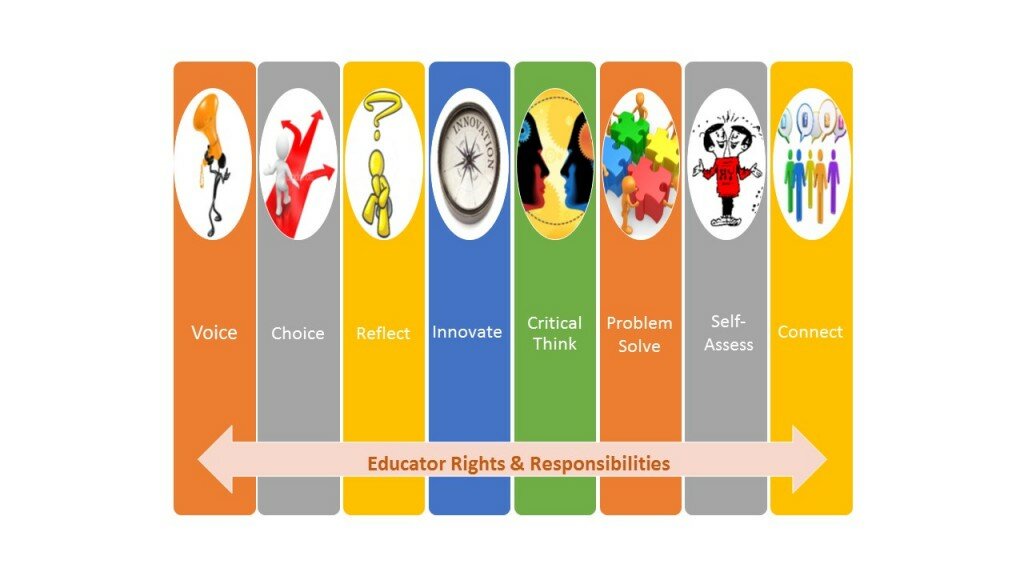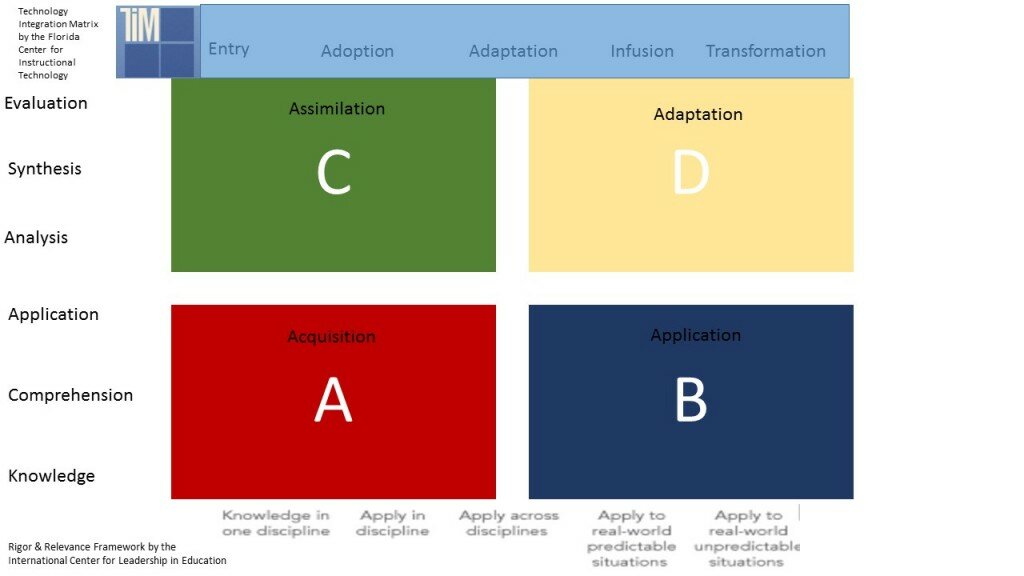Category Archives: Professional Development
My Resources and Tweets From #ISTE2016
Educator Rights & Responsibilities for Future-Ready Students
At the Innovative Education in Colorado (#InnEdCo15) conference, our Leadership preconference featured George Couros, who shared his thinking on transforming classrooms via Sylvia Duckworth’s great infographic. (8 Things to Look for In Today’s Classroom) This got me thinking: What if we applied these 8 things to professional learning and practice for teachers and administrators? As I continued thinking about these 8 things, I began to think of these as not just rights, but also responsibilities if we are ever going to achieve innovation in education and fundamentally transform learning to become relevant for each learner. What would you add to the list?
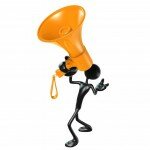 Voice
Voice
Teachers and administrators should learn from others and share their learning! Find your voice, get connected via Twitter, present at conferences, in staff meetings, and at parent meetings. Share the exciting learning that is occurring in your school or classroom.
 Choice
Choice
Strength-based learning: Give educators a choice! We understand that technology is opening a pathway to be able to personalize learning for each student. Why not use the same tools and strategies to make professional learning personal for every educator? Offer a blend of online and face-to-face learning. Give educators choice by letting them set personal learning goals and develop a pathway to get there. Provide coaching, support and resources to help them along the way.
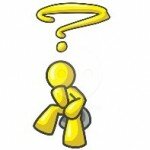 Time for Reflection
Time for Reflection
Everyone can benefit from writing and reflecting on what is being learned. Combine this with “Voice” – and you will make the case to start a blog to share your reflective practice with the world! Model reflection for your students. Be a co-learner.
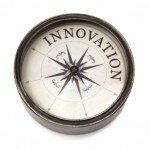 Opportunities for Innovation
Opportunities for Innovation
Administrators: teachers need opportunities for innovation in a safe environment. I’ve made this case on my blog a few times…teacher creativity leads to student creativity. Teachers: Design matters. Be innovative in creating learning experiences for your students that offer them the opportunity to think deeper, create and make connections in pursuit of answers and solutions to real world problems. This doesn’t happen in the factory model of education. Don’t just think outside the box – build a new box!
 Critical Thinkers
Critical Thinkers
Teachers and administrators should ask questions and challenge what they see. Don’t just do things in education because that’s the way it’s always been done. Times have changed! Challenge the status-quo and seek out opportunities to collaborate and problem solve for each student in your charge.
 Problem-Solvers – Finders
Problem-Solvers – Finders
Teachers and administrators face tough challenges. Merriam-Webster defines innovation as a new idea, device, or method. Find innovative solutions. Embrace the cycle of problem solving where you try, fail, and try again. Model this for your students.
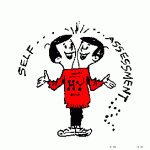 Self-Assessment
Self-Assessment
Self-assessment is formative assessment. It’s part of reflective practice. And, it’s important that teachers and administrators do this. Portfolios can help. And model. And give you voice. And help you connect and grow.
 Connected Learning
Connected Learning
Being a connected educator will make you a better educator. If we hope to be able to help our students safely and effectively navigate social media and the hyper-connected online world, we need to understand it as a participant –and a learner– ourselves. If we hope to keep up with the rapidly growing set of technology tools and strategies for learning, then Twitter is the place to be.
Systematic Approach to Innovation for Learning
One of my primary job responsibilities is helping educators in my district to innovate by providing thought leadership and professional development to get us there. We have embraced University of South Florida’s Technology Integration Matrix (TIM) as a way to help teachers understand the different levels of technology integration, with an eye toward reaching transformation, all while understanding that not all teaching and learning will fall into this category. Much like with the Rigor and Relevance Framework created by the International Center for Leadership in Education, we recognize that learning brand new content often occurs in Quadrant A, or, on the TIM, in the “entry level.” We explain that we hope teachers can increase the frequency of teaching and learning that occurs in Quadrant D of the Rigor & Relevance Framework, or transformative teaching and learning in the TIM. But lately I’ve been wondering, will this get us to innovation? Or, will we have teachers that will be content with the low-hanging fruit – which would be Quadrants A & B, or Entry/Adoption?
The two models are different, in that the TIM focuses on levels of technology integration –the strategy for learning, rather than describing the learning. TIM is all about how the tools are being used – not on the results they produce. It is about inputs. The Rigor & Relevance Framework describes what the students are doing, and the outcome.  As I look at these models and reflect, I wonder if transformation, as described by TIM, is enough for innovation. (See http://d20innovation.d20blogs.org/files/2013/05/Technology-to-Learning-Design-Chart.jpg) For instance, if we are using technology in transformative ways, but it is only for acquisition or application of knowledge, or is limited to one discipline, can we even describe this as transformative, in terms of the impact on the learner?
As I look at these models and reflect, I wonder if transformation, as described by TIM, is enough for innovation. (See http://d20innovation.d20blogs.org/files/2013/05/Technology-to-Learning-Design-Chart.jpg) For instance, if we are using technology in transformative ways, but it is only for acquisition or application of knowledge, or is limited to one discipline, can we even describe this as transformative, in terms of the impact on the learner?
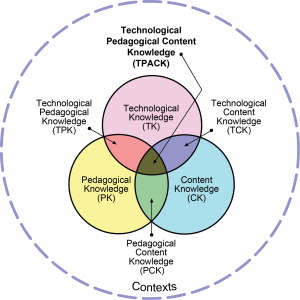 Let’s face it, educational technology departments are stretched pretty thin, and so much of our efforts are still being spent on just trying to get more teachers to use technology. But to obtain the level of innovation that we seek, transformative learning that will prepare our students for an “unimagined future,” a systematic approach is needed, that meets teachers where they are, and consistently moves them forward in both pedagogical and technological knowledge, so that they can achieve the sweet spot described in the TPACK model –Technological, Pedagogical Content Knowledge. We can’t just focus on TIM, because that is only about inputs. To really achieve innovation, I believe we must also use the Rigor and Relevance Framework and backwards design process outlined in Understanding by Design, which includes setting learning goals for transfer.
Let’s face it, educational technology departments are stretched pretty thin, and so much of our efforts are still being spent on just trying to get more teachers to use technology. But to obtain the level of innovation that we seek, transformative learning that will prepare our students for an “unimagined future,” a systematic approach is needed, that meets teachers where they are, and consistently moves them forward in both pedagogical and technological knowledge, so that they can achieve the sweet spot described in the TPACK model –Technological, Pedagogical Content Knowledge. We can’t just focus on TIM, because that is only about inputs. To really achieve innovation, I believe we must also use the Rigor and Relevance Framework and backwards design process outlined in Understanding by Design, which includes setting learning goals for transfer.
Underlying truly meaningful and deeply skilled teaching with technology, TPACK is different from knowledge of all three concepts individually. Instead, TPACK is the basis of effective teaching with technology, requiring an understanding of the representation of concepts using technologies; pedagogical techniques that use technologies in constructive ways to teach content; knowledge of what makes concepts difficult or easy to learn and how technology can help redress some of the problems that students face; knowledge of students’ prior knowledge and theories of epistemology; and knowledge of how technologies can be used to build on existing knowledge to develop new epistemologies or strengthen old ones (Koehler & Mishra, 2009, accessed at http://tpack.org/tpck/index.php?title=Main_Page).
Backwards Planning Professional Development for 1:1
I love the Understanding by Design (UbD) method for planning learning with the end in mind. This makes perfect sense, no matter what you teach – if your goal is to make sure that your students learn. (it’s not enough to say you “taught” it.) In my case, my learners happen to be teachers, and so modeling backwards planning when designing professional learning is essential.
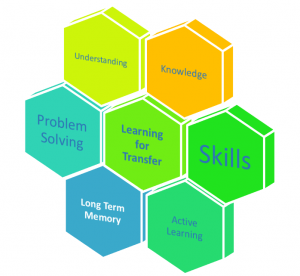 Currently, I am working on a plan for professional learning to support teachers who may pilot 1:1 through BYOD “Bring Your Own Device” in their classes next year. In UbD, Stage 1 involves identifying the learning goals for transfer, understanding, knowledge, and skills, and an overarching essential question that can drive the learning. I love how thinking through these learning goals can spark ideas for the “performance assessment” – which in this case will be the teachers designing learning that is focused on learning goals, and then designing a performance assessment and activities to support those goals – which is where the technology comes into play.
Currently, I am working on a plan for professional learning to support teachers who may pilot 1:1 through BYOD “Bring Your Own Device” in their classes next year. In UbD, Stage 1 involves identifying the learning goals for transfer, understanding, knowledge, and skills, and an overarching essential question that can drive the learning. I love how thinking through these learning goals can spark ideas for the “performance assessment” – which in this case will be the teachers designing learning that is focused on learning goals, and then designing a performance assessment and activities to support those goals – which is where the technology comes into play.
Here are the goals I’ve drafted–what would you add?
Transfer Goal:
Teachers create learning ecosystems that motivate students to own the learning by using technology to support deeper, more personal learning.
Goals for Understanding:
- What is possible to do with technology that could not be done without it
- Understanding how to design learning that motivates learners to take ownership
- Understanding how to give learners voice and choice
- Understand that learning is a social endeavor
- Understand that learner questions and questioning are at the heart of learning
- Understand that real world problem solving motivates learners to reach higher
- Understand that the more they release control, the more students will own the learning
Goals for Knowledge
- Teachers know how to backwards design learning
- Know what it “looks like’ when students are using technology in transformative ways
- Teachers know how to design learning for authentic problem solving
- Teachers know the 21st century skills
- Teachers know how to facilitate, rather than just deliver learning
Goals for Skill
- Basic troubleshooting of devices
- How to use a core group of apps and tools for creating and connecting
- How to model, teach, assess and give students feedback on 21st century skills
Essential Question: How can we make the learning ecosystem meaningful for each individual learner?
Bringing Innovation to High School
Do high schools today provide opportunities for students to innovate? This was the question that 3 high school science teachers in our “Creating Innovators” grant project kept asking themselves as they were reading Tony Wagner’s book Creating Innovators during our project’s book study. It seemed apparent that very few of the innovators described in the book attributed any of their innovative nature to teachers or mentors in their high school. Upon further reflection, these teachers, Kristi Follett, Heather Wendt and Niki Juhl realized that providing opportunities for innovation while still meeting content requirements and within the current school structure and time constraints is next to impossible, so they set out to do something about it.
In researching examples of innovation in the Colorado Springs area, they learned about a unique program at the University of Colorado, Colorado Springs: the world’s only Bachelor of Innovation Degree Program. This program offers Bachelor of Innovation degrees in six different majors: Business, Computer Science, Computer Security, Electrical Engineering, Game Design and Development and Inclusive Early Childhood Education. No matter which area students major in, all students in the program must complete 27 credit hours of the Innovation Core courses, to include courses in entrepreneurship, the innovative process, business and intellectual property law, technical writing, proposals & presentations, and innovation teams, to include analyze, report, research, execute, design, lead, and strategy. Students in this program work with real clients, write grants, design programs, and solve real-world problems.
Creativity is thinking up new things. Innovation is doing new things. – Theodore Levitt
Kristi, Heather & Niki reached out to the BI program via the visionary founder, Dr. Terry Boult, and Co-Director of of Strategic Alliances, Dr. Colleen Stiles. After multiple conversations, a true collaborative partnership emerged. One of the UCCS BI Innovative Teams classes adopted these 3 science teachers as a client. The problem they were trying to solve? How to bring 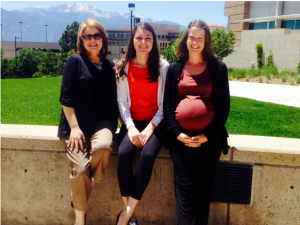 innovative learning opportunities to high school science classes. The result? The UCCS students worked with Kristi, Heather and Niki to design an elective science course, I.D.E.A.S. – “Innovative Design in Educational Alliances for STEM.” The program is rooted in standards for Science, English, and Math, but also addresses all parts of innovation: funding, teams, process, and protection of ideas – and 21st century skills. Essentially, high school students will be mentored by UCCS BI students and participate on innovative teams applying science knowledge to solve real world problems for clients. The BI students are currently seeking funding for the program, and are prepared to assist when it comes time to request the new course before the school board. These BI students are highly motivated to make this happen, being recent high school graduates themselves. They recognize the need to create more engaging and authentic learning experiences for high school students.
innovative learning opportunities to high school science classes. The result? The UCCS students worked with Kristi, Heather and Niki to design an elective science course, I.D.E.A.S. – “Innovative Design in Educational Alliances for STEM.” The program is rooted in standards for Science, English, and Math, but also addresses all parts of innovation: funding, teams, process, and protection of ideas – and 21st century skills. Essentially, high school students will be mentored by UCCS BI students and participate on innovative teams applying science knowledge to solve real world problems for clients. The BI students are currently seeking funding for the program, and are prepared to assist when it comes time to request the new course before the school board. These BI students are highly motivated to make this happen, being recent high school graduates themselves. They recognize the need to create more engaging and authentic learning experiences for high school students.
To read more about Kristi, Heather, and Niki’s innovative adventures, visit their blog, Innovation Adventures, and follow them on Twitter:
Reaching “Technology-Reluctant” Teachers
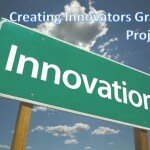 How do we reach teachers who would probably never volunteer to attend an educational technology professional development workshop, let alone a full-year grant project? During the 2013-14 school year, our IT-Educational Services department wanted to use some internal grant funding to try to reach out to some of these teachers in a meaningful way; to start them on the road toward innovative and transformative learning for their students. We decided on piloting a peer-mentoring program, where we would select some of our innovative/early adopting teachers from 8 different schools to mentor 2-3 “technology-reluctant” teachers in their schools. Here are the goals we drafted:
How do we reach teachers who would probably never volunteer to attend an educational technology professional development workshop, let alone a full-year grant project? During the 2013-14 school year, our IT-Educational Services department wanted to use some internal grant funding to try to reach out to some of these teachers in a meaningful way; to start them on the road toward innovative and transformative learning for their students. We decided on piloting a peer-mentoring program, where we would select some of our innovative/early adopting teachers from 8 different schools to mentor 2-3 “technology-reluctant” teachers in their schools. Here are the goals we drafted:

Designing the Professional Development Plan
We use Understanding by Design to plan out our professional development workshops and programs, to help us assure that we identify meaningful learning goals for our teachers, activities were aligned with these goals, and that measures of success were in place. For this project, our overall transfer goal was this:

Before meeting with the whole group of mentors & mentees, we had one workshop just for the mentors, to give them tips and  information on strategies for instructional coaching, using many of the wonderful resources from ISTE’s Coaches PLN, including the ISTE Standards for Coaches. Both mentors & mentees participated in an online learning community to do a book study of Tony Wagner’s wonderful book, Creating Innovators – from which we came up with the title of our grant project. Throughout the year, we offered four face-to-face workshops to the whole group. At each workshop, we modeled active, hands-on learning, sharing strategies and tools that they could use in their classrooms. We used the University of South Florida’s Technology Integration Matrix for teachers to self-assess where they were in using technology and the videos to help them capture a vision of where they’d like to be. We set up “think tanks” for them to benefit from small group brainstorming on how to improve a lesson or unit through the use of technology tools and innovative learning strategies. We introduced them to the Stanford dSchool Design Thinking process. Additionally, we provided subs so they could visit each other’s classrooms, and we visited two innovative schools in the Denver Metro area – Adams 12’s STEM program at Northglenn High School and the STEM Launch K-8 school, also in Adams 12. In addition to all of this, the mentors worked 1:1 with their mentees throughout the year, offering just-in-time teaching of tools and strategies, advice, and encouragement. All of these activities were designed with the end in mind: building the mentee teachers’ understanding, skills and confidence so that they would be willing to try some of these innovative practices for teaching and learning with their own students.
information on strategies for instructional coaching, using many of the wonderful resources from ISTE’s Coaches PLN, including the ISTE Standards for Coaches. Both mentors & mentees participated in an online learning community to do a book study of Tony Wagner’s wonderful book, Creating Innovators – from which we came up with the title of our grant project. Throughout the year, we offered four face-to-face workshops to the whole group. At each workshop, we modeled active, hands-on learning, sharing strategies and tools that they could use in their classrooms. We used the University of South Florida’s Technology Integration Matrix for teachers to self-assess where they were in using technology and the videos to help them capture a vision of where they’d like to be. We set up “think tanks” for them to benefit from small group brainstorming on how to improve a lesson or unit through the use of technology tools and innovative learning strategies. We introduced them to the Stanford dSchool Design Thinking process. Additionally, we provided subs so they could visit each other’s classrooms, and we visited two innovative schools in the Denver Metro area – Adams 12’s STEM program at Northglenn High School and the STEM Launch K-8 school, also in Adams 12. In addition to all of this, the mentors worked 1:1 with their mentees throughout the year, offering just-in-time teaching of tools and strategies, advice, and encouragement. All of these activities were designed with the end in mind: building the mentee teachers’ understanding, skills and confidence so that they would be willing to try some of these innovative practices for teaching and learning with their own students.
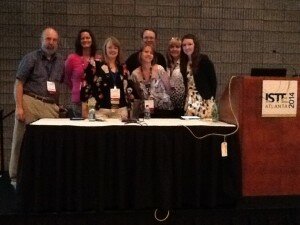
Academy District 20’s Creating Innovators Mentor Team: Phil McIntosh, Toni Olivieri-Barton, Nancy White, Autumn Cave-Crosby, Doug Hinkle, Sandy Vuletich, and Kristi Follett. Not pictured: Leni Schlieper, Alicia Needham.
I am happy to report that we were very successful in accomplishing our goal. It was interesting that each team of teachers seemed to connect with one particular strategy from our professional development plan, and all seemed to branch out in different directions, to best meet the needs of the learners in their schools. Our mentor teachers presented as a panel at ISTE to an audience of over 200 people, sharing their challenges and successes in the Creating Innovators Project.
I’d like to share with you the impact on one of our elementary teachers. The video below was produced by Justin Crosby and mentor teacher, Autumn Crosby, and features Autumn’s mentee, Cheryl Hammarquist, kindergarten Teacher, Michelle Sylvestri, kindergarten paraprofessional, and Dr. Kathy Pickering, assistant principal.
In my next blot post, I will share the story of our high school mentor/mentee team, who are taking innovation to a whole new level!
Creative Learning by Design

Coming up with ways to help teachers to “think outside the box” can be challenging, especially in this time of teacher evaluations tied to standardized test scores, implementation of common core standards, and new standards-based report cards. Where, oh where, does creativity and innovation fit in our standards-based system? But just as designing learning for students that allows room for them to practice creativity in a safe environment requires a creative approach, professional developers need to do the same in designing learning for teachers, especially when the overarching goal is for teachers to “create innovators.”
In my backwards-designed professional development workshop, one of my goals for teachers was to be able to imagine what a creative learning environment might look like – what elements were required for their students to be able to develop the traits of an innovator. I turned to a strategy I learned about a few years ago through the Model Schools Conference, put on by the International Center for Leadership in Education. This strategy is LEGO® SERIOUS PLAY® – one that two of our schools have implemented very successfully with students, with many boxes of Lego blocks!
 The idea is simple. Use the Lego blocks to build a model, and then explain what you put in the model and why. This is adaptable to any content area or learning topic. I have seen first graders build models of family traditions, using iPads to record each others’ narratives, and 3rd graders build models of time machines from a story they read, then practice oral presentation skills sharing their models with the class. Other ideas: Students could build models of the scientific process “in action” or history students might build a model showing the effects of the Cold War. There is a great deal of both creativity and critical thinking that goes into this task, and it is amazing what those colorful little Lego blocks can do to inspire that creativity, while helping students reach deeper insights. This activity can work with learners of all ages.
The idea is simple. Use the Lego blocks to build a model, and then explain what you put in the model and why. This is adaptable to any content area or learning topic. I have seen first graders build models of family traditions, using iPads to record each others’ narratives, and 3rd graders build models of time machines from a story they read, then practice oral presentation skills sharing their models with the class. Other ideas: Students could build models of the scientific process “in action” or history students might build a model showing the effects of the Cold War. There is a great deal of both creativity and critical thinking that goes into this task, and it is amazing what those colorful little Lego blocks can do to inspire that creativity, while helping students reach deeper insights. This activity can work with learners of all ages.
So, I gave my teachers the task of building a model of the ideal learning environment where creativity and innovation can flourish. They had fun, imagined, and thought deep outside the box about these things. They played, they tapped into their passion for learning, and they are now clearly focused on the task at hand – their purpose in this grant project – to really build these environments for their students,
Here is one example – enjoy!
From Blended Learning to Creating Innovators
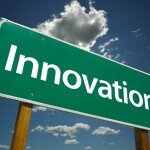 This week, we launched our Creating Innovators Grant Project and I am really excited about the possibilities. The project involves peer coaching, where some of our most creative and innovative teachers have agreed to mentor 2 teachers in their schools who otherwise would probably not have volunteered for this kind of in-depth professional development. The mentor teachers applied to participate, and were selected not only based on their own creative teaching talents, but from an expressed desire to learn and grow themselves through the experience.
This week, we launched our Creating Innovators Grant Project and I am really excited about the possibilities. The project involves peer coaching, where some of our most creative and innovative teachers have agreed to mentor 2 teachers in their schools who otherwise would probably not have volunteered for this kind of in-depth professional development. The mentor teachers applied to participate, and were selected not only based on their own creative teaching talents, but from an expressed desire to learn and grow themselves through the experience.
Our hope is to move not just the “mentees” forward as designers of learning, but their mentors as well. These teachers have been very successful with integrating technology in a blended learning model, but as a district, we have not entirely identified where we want to go with this new way of teaching. Is it merely to assure all students do well on standardized tests and get into good colleges with good grades? Or is our purpose for blending learning something greater?
Blended learning has the potential to go beyond merely meeting the goals of standardization. I hope that through our approach in this grant project, our mentor teachers will also come to understand that blended learning is only the first step in transforming the classroom learning experience for their students. Blended learning can lead to personalizing learning for students – towards the end goal of creating innovators. Technology is just one powerful tool of blended learning, but technology alone is not going to get us there.
 Teachers must become designers of learning. Technology allows them to alter more than just the time, place and pace of learning. Technology can help teachers design learning that alters the path of learning. Technology can help them design learning that is tailored to students’ passions. With standards as the baseline, there are an infinite number of paths that can lead students to mastery and understanding. Transformation in learning will occur when we use technology to create different paths for students – paths that help students find and follow their passion. Transformation can occur when creating innovators is our goal.
Teachers must become designers of learning. Technology allows them to alter more than just the time, place and pace of learning. Technology can help teachers design learning that alters the path of learning. Technology can help them design learning that is tailored to students’ passions. With standards as the baseline, there are an infinite number of paths that can lead students to mastery and understanding. Transformation in learning will occur when we use technology to create different paths for students – paths that help students find and follow their passion. Transformation can occur when creating innovators is our goal.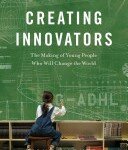
The title of this grant project says it all: Creating Innovators. It has a double meaning, as we hope to create innovators of both our teachers, and our students. To create innovators, we need to foster play, passion, and purpose, as our teachers will learn through a book study of Tony Wagner’s book Creating Innovators. We will use these strategies first with our teachers.
How are you using technology to provide different pathways for student learning?
In my next post, I will share how our professional development for the mentors and mentees is modeling play, passion & purpose.
Teachable Moments for Digital Citizenship
Update: Since this was posted on Edudemic 11/23/13, I’ve had a few requests for a PDF of the poster. Here it is!
In preparing for professional development on the topic of Digital Citizenship for teachers in our 1:1 iPad pilot next school year, I have been searching for a resource to share on the importance of modeling these skills. While there are some great resources available for teaching Digital Citizenship as a separate curriculum to students (Common Sense Media, KidSmart, and Digizen to name a few) I know that teaching in isolation is not usually as effective as taking advantage of teachable moments – when students are actually online and pursuing a learning task to reinforce appropriate behavior, safety, and application of skills.
I didn’t find what I was looking for – so I decided to create an infographic. I used Pictochart – great tool!
Here is a direct link to the infographic on the site.

“Speed Dating” Activity for Faculty Meetings/Workshop
Yesterday’s #edchat focused on creative strategies to make faculty meetings more engaging and valuable to teachers. It occurred to me that one of the activities I designed for our DODEA grant
- Photo by CRDM. http://crdm.wordpress.com/2010/12/10/crdm-speed-dating/
participants to initiate sign-ups for peer observations would work great in a faculty meeting. I called it “speed dating” because they really were setting a date –to do a peer observation!
Teachers in our DODEA grant project (K-12) have worked all year to design four in-depth units using the Understanding by Design process. Most of these units will be implemented sometime this semester. I had set up a Google Doc for teachers to post when they would be teaching a unit and would welcome peer observers so that other teachers could sign up to visit. This idea looked good on paper, but it was just too messy, I think, and so no one was signing up either way. That is when I thought of the speed dating idea. Here is how it worked:
Teachers were instructed to prepare to share one of their units. They had 5 minutes to share during each rotation. Here are the directions they were given.
During each rotation, meet with a different teacher to exchange brief information about at least one UbD:
-Title/Subject/Grade Level
-Transfer Goal
-Understandings
-21st century skill being modeled/taught/assessed
-Essential Question
-Performance Assessment
- “Sign up” with each teacher you are interested in observing
- You will have 5 minutes for each rotation – be prepared with what you will share since time will be short! A music jingle will be played to signal time to move to the next teacher. (“The Dating Game” theme)
- Online teachers will provide information about how their online classes can be “observed” asynchronously
- All observation information will be transferred to our online Google Doc for peer observations
Room Set up:

The expectation was that by the end of the meeting, everyone would have signed up to observe at least one other teacher, and have at least one person coming to observe them. In reality, most teachers came away with 3-4 peer observations to participate in. (We are fortunate that our grant is paying for sub time for these peer observations to happen.)
Below are the documents I created for the activity. Feel free to share/use/adapt!
SPEED DATING Activity to review UbDs and sign up for observing
« older entries

